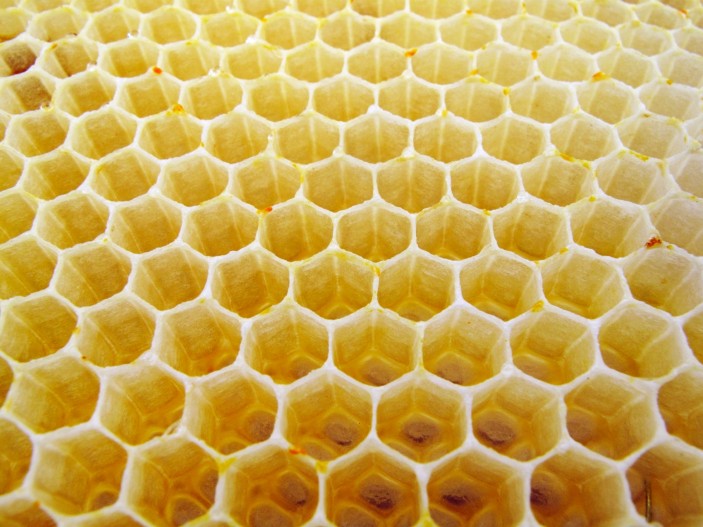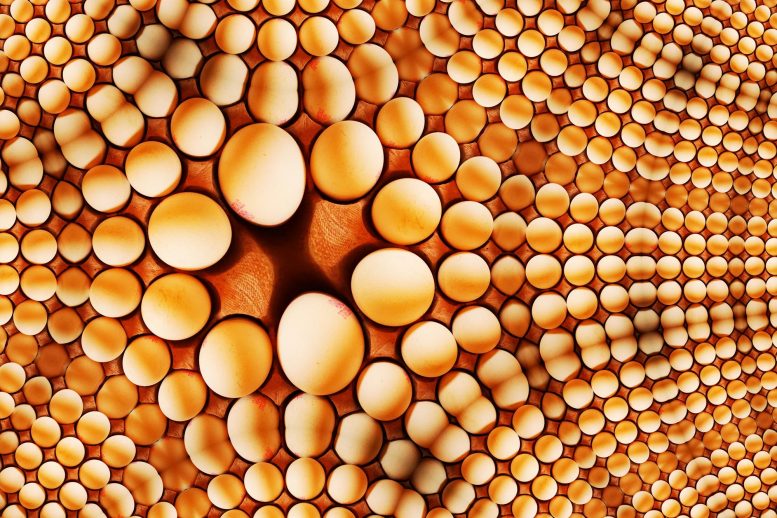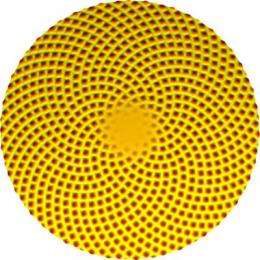You are using an out of date browser. It may not display this or other websites correctly.
You should upgrade or use an alternative browser.
You should upgrade or use an alternative browser.
Imagination.
- Thread starter Beaconator
- Start date
Why not a cube?
Because the periodic table is not based on the cube . nor do the atomic structures of atoms .
Last edited:
Write4U
Valued Senior Member
Yes, I'll be more than happy to explain it to you.No...you are still missing the point..ahh my bad...
Can you be "more than happy"?
"Hey Joe, did you hear, .. they had to commit George to an institution, .. he was, .. uhhhhh, .. more than happy"
Last edited:
Write4U
Valued Senior Member
Do you mean a mathematical sphere is a fundamental natural physical pattern? OK, I agree.Because the periodic table is not based on the cube . nor do the atomic structures of atoms .
I think Plato missed that minor object in his analogy of idealized patterns, the Platonic solids.


Schematic view of adenovirus. The icosahedral capsid is formed by the hexon. The penton base is located at the 12 vertices and forms a non-covalent complex with the trimeric fiber. The fiber's knob domain is responsible for the interaction with the receptors.
Sphere, shape
Description
A sphere is a geometrical object that is a three-dimensional analogue to a two-dimensional circle. A sphere is the set of points that are all at the same distance r from a given point in three-dimensional space. That given point is the centre of the sphere, and r is the sphere's radius. Wikipedia

https://calcworkshop.com/volume-surface-area/sphere/
Math in Nature: Perfect Spheres
Nonetheless, a perfect sphere does appear in nature and can be seen in examples such as bubbles, water drops, planets, and atoms. ... In nature, gravity and force tend to make many things into spheres such as bubbles, planets, and atoms. If these spheres were not balanced, they would not exist. Mar 31, 2015

https://www.mathnasium.com.hk/2015/01/math-in-nature-perfect-spheres
Perfect symmetry, the ultimate mathematical object.
Do you mean a mathematical sphere is a fundamental natural physical pattern? OK, I agree.
I think Plato missed that minor object in his analogy of idealized patterns, the Platonic solids.


Schematic view of adenovirus. The icosahedral capsid is formed by the hexon. The penton base is located at the 12 vertices and forms a non-covalent complex with the trimeric fiber. The fiber's knob domain is responsible for the interaction with the receptors.
Sphere, shape
Description

https://calcworkshop.com/volume-surface-area/sphere/
Math in Nature: Perfect Spheres
The Physical .
Write4U
Valued Senior Member
A virus is a physical object and not spherical, but icosahedral. Another mathematically self-organizing physical object.The Physical .
Hexagonal
Do bees know math?

The regular hexagons of honeycombs might owe more to the laws of physics than to honeybees' engineering prowess. Credit: CORDELIA MOLLOY/SPL
https://www.nature.com/articles/nature.2013.13398
A virus is a physical object and not spherical, but icosahedral. Another mathematically self-organizing physical object.
Hexagonal
Do bees know math?

The regular hexagons of honeycombs might owe more to the laws of physics than to honeybees' engineering prowess. Credit: CORDELIA MOLLOY/SPL
https://www.nature.com/articles/nature.2013.13398
Write4U
The physical form is the consequence of the physical . Mathematics , in and of its self , can not form a physical thing , without reference to a physical thing .
Write4U
Valued Senior Member
Physical things emerge from mathematical patterns. But let's compromise and admit that this is an equation,Write4U
The physical form is the consequence of the physical . Mathematics , in and of its self , can not form a physical thing , without reference to a physical thing .
https://www.britannica.com/science/equationstatement of equality between two expressions consisting of variables and/or numbers. In essence, equations are questions, and the development of mathematics has been driven by attempts to find answers to those questions in a systematic way.
The Perfect Shape? Research Finally Reveals Ancient Universal Equation for the Shape of an Egg

Egg-shape has long attracted the attention of mathematicians, engineers, and biologists from an analytical point of view. The shape has been highly regarded for its evolution as large enough to incubate an embryo, small enough to exit the body in the most efficient way, not roll away once laid, is structurally sound enough to bear weight and be the beginning of life for 10,500 species that have survived since the dinosaurs. The egg has been called the “perfect shape.”
Analysis of all egg shapes used four geometric figures: sphere, ellipsoid, ovoid, and pyriform (conical), with a mathematical formula for the pyriform yet to be derived.
https://scitechdaily.com/the-perfec...t-universal-equation-for-the-shape-of-an-egg/To rectify this, researchers introduced an additional function into the ovoid formula, developing a mathematical model to fit a completely novel geometric shape characterized as the last stage in the evolution of the sphere-ellipsoid, which is applicable to any egg geometry.
Last edited:
↑
Write4U
The physical form is the consequence of the physical . Mathematics , in and of its self , can not form a physical thing , without reference to a physical thing .
Disagree
My thinking says that mathematical patterns emerge from three dimensional physical objects , movements .
Write4U
The physical form is the consequence of the physical . Mathematics , in and of its self , can not form a physical thing , without reference to a physical thing .
Physical things emerge from mathematical patterns. But let's compromise and admit that this is an equation,
Disagree
My thinking says that mathematical patterns emerge from three dimensional physical objects , movements .
Write4U
Valued Senior Member
How nature's patterns form

This image shows the pattern on the head of a sunflower as generated by a mathematical model of plant growth. Credit: Matt Pennybacker, University of Arizona.

This image shows the pattern on the head of a sunflower as generated by a mathematical model of plant growth. Credit: Matt Pennybacker, University of Arizona.
Patterns arise when the symmetry of a system is broken, Newell said. The similarity in patterns from system to system occur when the systems have similar symmetry, rather than because the systems are made from the same materials.
"The mathematics elegantly captures the fact that pattern structure depends more on shared geometrical symmetries than material properties, because the simplified equations for all these very different situations turn out to be the same," he said.
https://phys.org/news/2011-02-nature-patterns.htmlNewell said, "Mathematics is like a good poem, which separates the superfluous from the essentials and fuses the essentials into a kernel of truth."
Newell said, "Mathematics is like a good poem, which separates the superfluous from the essentials and fuses the essentials into a kernel of truth."
No it doesn't .
Write4U
Valued Senior Member
Tell Alan C. NewellNo it doesn't .
Alan C. Newell
Irish-American mathematician

Description
Alan C. Newell is an Irish/American mathematician and Regents Professor at the University of Arizona. He was awarded a Guggenheim Fellowship in 1976 and in 2004 the John von Neumann Lecture for the Society for Industrial and Applied Mathematics. Wikipedia
Go on . Mathematics about the superfluous .
Write4U
Valued Senior Member
He is the mathematician.Newell said, "Mathematics is like a good poem, which separates the superfluous from the essentials and fuses the essentials into a kernel of truth."
Yes it does.No it doesn't .
Yes, mathematics separates the superfluous from the essential and fuses the essentials into a kernel of truth.Go on . Mathematics about the superfluous .
I think that was elegantly posited.
He is the mathematician.
Yes it does.
Yes, mathematics separates the superfluous from the essential and fuses the essentials into a kernel of truth.
I think that was elegantly posited.
But not True .
Write4U
Valued Senior Member
I disagree. Sorry.....But not True .
Write4U said: ↑
He is the mathematician.
Yes it does.
Yes, mathematics separates the superfluous from the essential and fuses the essentials into a kernel of truth.
I think that was elegantly posited.
But not true .
I disagree. Sorry.....
Disagree why ?
Write4U
Valued Senior Member
Because I agree with the mathematician.But not true .
Disagree why ?
Because I agree with the mathematician.
No surprise . Computers and all .
Beaconator
Valued Senior Member
Both sides of the argument are known. Science has only risen to the point of dashing our imagination.Everything that one knows about in one's own reality is just a figment of one's imagination.
Otherwise one would not know about it at all.
There are just varying intensities of the imagination. If one were to imagine thing x vividly enough, then the imagination of thing x would become indistinguishable from the reality of thing x. The understanding of one's own physical constructs is the only thing in one's mind which stops thing x from being imagined so vividly that it becomes indistinguishable from reality. For example, if I were to imagine, vividly enough, that I had lifted a rock with my mind, it would happen in my own subjective reality. Whether or not it would happen in other peoples realities, I do not know. However, this is the same as always, because the only thing that anyone knows is the contents of their own minds, so they can never be sure of anything that anybody else is thinking.
Your comment really hints at the philosophy of idealism, which I agree with. I agree with the philosophy of idealism because words which mean anything other than some kind of experience, are impossible to interpret, and therefore, mean absolutely nothing. This gives the form Anything other than some kind of experience=absolutely nothing. All of this is self evident, but for some reason, some people seem to get confused about it anyway, so I decided to throw some words around in order to change that.
but religion has esteemed us to a false sense of imagination…
neither are perfectly right.
